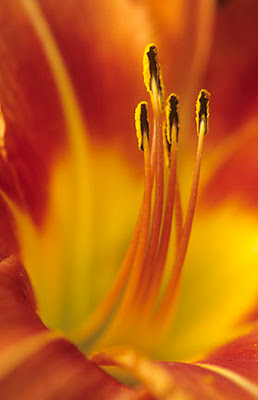
OF SPECIAL NOTE:
a) There will be no Instructor's Tip next Monday as Russ will be in Arches and Canyonlands on his tour. He still has 2 openings. Email him about a special short notice deal if you can get away from May 9-15. This tour also includes a minimum of 10 hours of one on one Photoshop instruction - get great images and learn Photoshop.
b) Denver Locals - Russ has a few openings for an Intermediate level Digital Photo Academy class tonight from 6:00 - 10:00. It includes a special eye opening exercise that will help you to improve your photography by leaps and bounds.
c) Russ just finished updating his website with some new layouts and new pics - have a look.
I hope you enjoy this week's "Instructor's Tip" by one of my favorite instructors, award winning nature photographer Russ Burden. To learn more about how Russ captured the above image, join him on one of his photo tours. Visit Russ Burden Photography to get more information.
FLOWER POWER
What is it that separates a good floral image from an ordinary one? Three main factors enter the picture. To complicate the issue, no one factor alone makes the photograph work. It’s a combination of all the following:
LIGHT
As with any subject, the quality of light plays a huge role in making or breaking an image. Because of a flower’s small size, poor natural light can be modified or augmented with easy-to-carry, inexpensive equipment giving the flower a more pleasing look. During mid-day, when the light is harsh and contrasty, it can be softened through the use of reflectors, flash or diffusion material. Bright overcast conditions are perfect for photographing flowers.
SPECIMEN CHOICE
Let’s face it - not every flower you encounter is a good specimen. Finding one with excellent form and color is the goal. Factors that impact what the flower will look like are the seed from which it grew, wind, sun, bugs and age. Being patient, persistent, and observant are factors that determine whether or not you find the right one. When I’m out in the field, I slowly wander searching for a flower that says, “I’m the one.” Depending on what I find, some days I’ll come back not having shot a frame while on others, I’ll electrify many pixels.
CONTROLLING THE BACKGROUND
Equally as important as both the light and the flower itself, if the background does not complement the flower, the best possible photo will not be created. Factors to consider are color harmony, clutter and out of focus highlights. Ways to control these are through depth of field, selective focus, lens length, the use of flash and use of artificial backgrounds.
-Russ
Take a class with Russ or a fellow Digital Photo Academy instructor in your area, check out the Digital Photo Academy. I took Russ' intermediate and advanced courses last year, and he continues to be a strong source of knowledge and encouragement as I progress in my photography.
Don't forget to check Take Great Pictures for Russ' most recent tips. On the home page, click on the "Photo Tips And Techniques" button in the left hand column. Additionally, check out his "Digital Tip of the Month" found by clicking on the Digital Photography button.















No comments:
Post a Comment